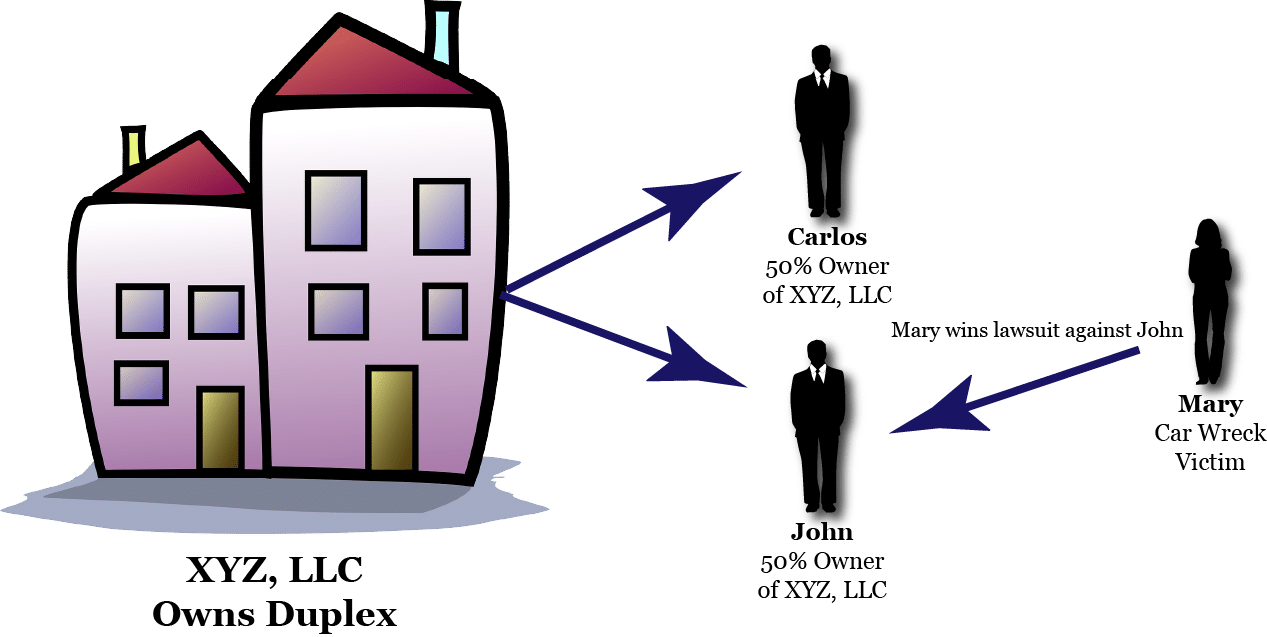Have you heard that land trusts provide asset protection? Do you believe it?
Applicable Law
Two cases from Illinois concluded that, in a land trust, although the legal and equitable title lies with the trustee, most of the usual attributes of real property ownership are retained by the beneficiary under the trust agreement: (1) Just Pants v. Bank of Ravenswood, 136 Ill.App.3d 543, 483 N.E.2d 331, 335-36 (Ill.App. 1985); and (2) People v. Chicago Title and Trust Co., 75 Ill. 479, 389 N.E.2d 540 (Ill. 1979).
Just Pants v. Bank of Ravenswood
In Just Pants v. Bank of Ravenswood, 136 Ill.App.3d 543, 483 N.E.2d 331, 335-36 (Ill.App 1985), the lessee of property which was subsequently sold under a land trust sued the trustee of the land trust for conversion and breach of contract. Following judgment in favor of the trust, the trial court granted the lessee’s motion to amend the complaint and judgment to include the beneficiaries, and entered judgment against only the beneficiaries. The beneficiaries appealed, and the Illinois Court of Appeals held that reversal was required where the reviewing court had no way of knowing the respective responsibilities of the trustee and the beneficiaries. 483 N.E.2d at 333-34. The Court noted that, in an action involving a land trust, the question of whether the beneficiary or the trustee is the proper party depended upon the nature of the action in light of the rights and duties established by the trust agreement. The Court pointed out that the beneficiary in a land trust is the proper party to litigation involving his rights and liabilities of management, control, use and possession of the property; and, moreover, that beneficiaries in land trusts oftentimes retain managerial rights in the property, and in exercising these rights, enter into a variety of contractual arrangements resulting in the accrual of causes of action against then that do not involve the trustee. The Court observed that actions sounding in tort involving land trust property usually arise from the operation and maintenance of the property; that such causes are based on negligence, and accrue against only the beneficiary, and not the trustee; and that the trustee is insulated from these responsibilities if he has no rights of possession, operation, control, or maintenance. Thus, the Court concluded that trustees who hold legal title to realty through a trust agreement are not liable for damages resulting from defects in the trust premises when the agreement gives the beneficiaries, and not the trustees, the power to make the needed repairs; and furthermore, that beneficiaries can also be held responsible for the torts or frauds of the trustee where they participate in or authorize the commission of the wrongs. 483 N.E.2d at 335. The Court remanded the case to the trial court to determine the respective responsibilities of the trustee and the beneficiary under the trust agreement. 483 N.E.2d at 336.
People v. Chicago Title and Trust Co.
In People v. Chicago Title and Trust Co., 75 Ill. 479, 389 N.E.2d 540, 542-43, 546 (Ill. 1979), a consolidation of six separate actions brought in the name of the People of the State of Illinois to recover unpaid real estate taxes on land held in land trusts, the State sought to impose personal liability for the real estate taxes on the following three entities: (1) the banks or trust companies in their individual corporate capacities; (2) the banks or trust companies in their capacities as land trustees of land trust property; and (3) the beneficiaries of the land trust, all as “owners” of the tracts of land trust property. The trial court found the trustees in their individual corporate capacities liable, and dismissed the cases as to the banks and trust companies as trustees, and as to the beneficiaries. 389 N.E.2d at 542. The Illinois Supreme Court granted motions for direct appeal, and held that, since the beneficiaries of a land trust controlled the purchase, sale, rental, management, and all other aspects of land ownership and title; and since the trustees could act only upon the beneficiaries’ written direction, the beneficiaries were “owners,” within the meaning and intendment of the statute providing that “owners” of realty shall be liable for taxes. As such, the beneficiaries were personally liable for the unpaid real estate taxes. The Court stated that the realities of land ownership clearly indicated that land trust beneficiaries were “owners”; and that, as “owners,” they were personally liable for the unpaid real estate taxes. 389 N.E.2d at 546.
In so concluding, the Court reviewed the history of the Illinois land trust. The Court noted that the Illinois land trust was a unique creation of the Illinois bar, although its acceptance elsewhere had received a great deal of attention. The Court pointed out that its origin was rooted in case law rather than in statute; and that, over the years, the land trust had served as a useful vehicle in real estate transactions for maintaining the secrecy of ownership and allowing for the ease of transfer. The Court noted that, despite recent disclosure statutes, the Illinois land trust remained a widely utilized and useful device. 389 N.E.2d at 543. The Court emphasized that, in land trusts, the legal and equitable title lies with the trustee, and the beneficiary retains what is referred to as a personal property interest; however, most of the usual attributes of real property ownership are retained by the beneficiary under the trust agreement. In fact, the Court observed that the only attribute of ownership ascribed to the trustee is that relating to title, upon which third parties may rely in in transactions where title to the real estate is of primary importance. 389 N.E.2d at 543.
Conclusion
The prevailing belief, that land trusts protect property owners from all liability, is not even true in Illinois, which originated land trusts.



